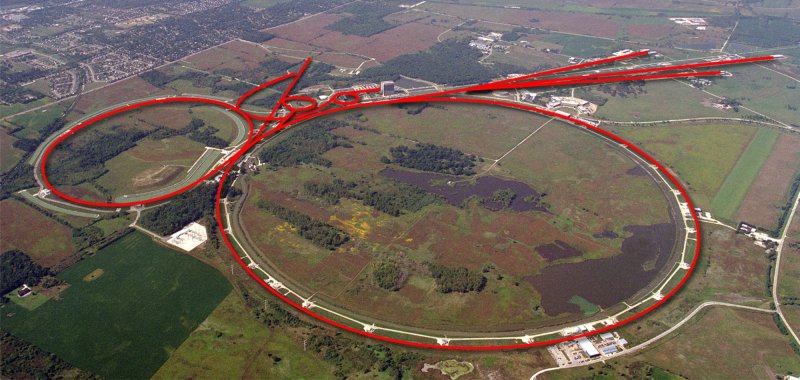1 of 2 | The Fermilab accelerator complex is seen in an undated handout photo. Fermilab accelerator complex accelerates protons and antiprotons close to the speed of light.The Tevatron collider, four miles in circumference, produces millions of proton-antiproton collisions per second, maximizing the chance for discovery. Two experiments, CDF and DZero, record the collisions to look for signs of new particles and subatomic processes. UPI/Fermilab/HO |
License Photo
ANN ARBOR, Mich., Aug. 8 (UPI) -- The NOvA experiment at Fermilab is already proving a success. Scientists at the U.S. Department of Energy's Fermi National Accelerator Laboratory have reported observing neutrino oscillation.
Neutrinos are neutral subatomic particles unaffected by most atomic forces and with only a smidgen of mass. They're produced by a variety of high-energy reactions, including the Big Bang, solar fusion, supernovas and nuclear reactions.
What makes them so fascinating is that they can travel directly through matter as if it wasn't there. They also oscillate, changing from one type to another -- from muon neutrinos to electron neutrinos.
The NOvA experiment was designed to produce and study neutrinos' unique behavior. So far, so good. Researchers announced their early successes at the American Physical Society's Division of Particles and Fields conference in Ann Arbor, Mich., this week.
"People are ecstatic to see our first observation of neutrino oscillations," NOvA co-spokesperson Peter Shanahan said in a press release. "For all the people who worked over the course of a decade on the designing, building, commissioning and operating this experiment, it's beyond gratifying."
Researchers were able to observe the oscillation by firing a trillions of of muon neutrinos from an accelerator at the Fermilab, outside Chicago. The neutrinos travel 500 miles through Earth's crust to a detector at Ash River, Minnesota. There, scientists were able to filter through millions of cosmic ray strikes and hone in on neutrino interactions.
The arriving neutrinos featured some electron neutrinos, suggesting they had oscillated along their path through Earth.
"Basically, it shows that we know what we're doing," said Patricia Vahle, associate professor of physics at the College of William & Mary.
Researchers believe neutrinos may hold the key to understanding some of greatest mysteries of the cosmos and physics. Scientists hope further observations will tell them something about antimatter, dark matter and the Higgs boson.
"One of the big questions of the universe is this: Why is there matter?" said Jeffrey Nelson, a professor of physics at William & Mary who helped plan the NOvA experiment. "Why is there stuff? Matter and antimatter could have just annihilated and we'd be left with nothing in the universe but energy. If the answer isn't in neutrinos, it's something really exotic."















